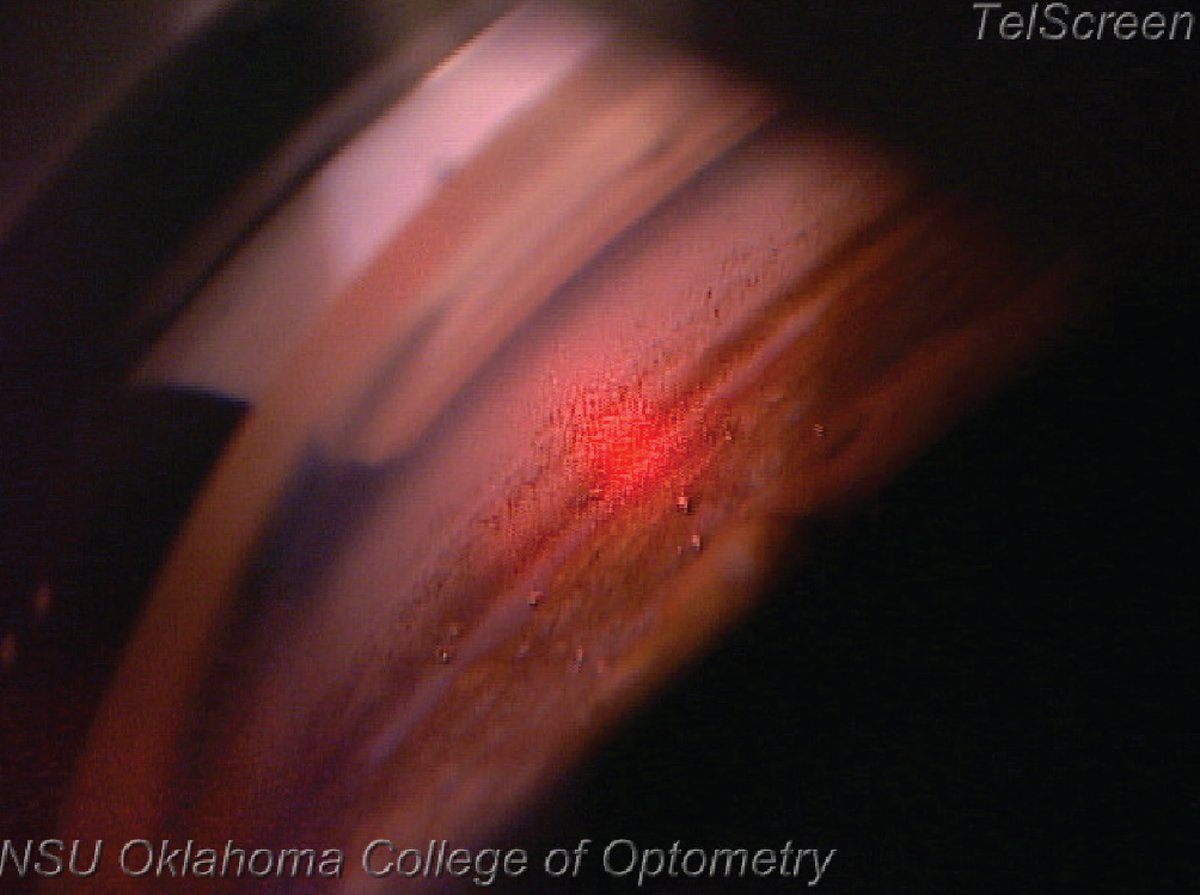 |
| Patients with open-angle glaucoma or ocular hypertension treated with topical medication vs. SLT showed no difference in IOP fluctuation, rate of eyes at target IOP, visual field or quality of life at two, three, six and 12 months of follow-up. Photo: Nate Lighthizer, OD. |
Prostaglandin analog monotherapy has long been considered the first line of treatment for open-angle glaucoma (OAG) and ocular hypertension, despite presenting various challenges like side effects, cost considerations and non-adherence to treatment, all of which can undermine the effectiveness. Given its superior risk/benefit profile compared to topical therapy, selective laser trabeculoplasty (SLT) has gained acceptance in recent years as a preferred primary treatment for new cases of primary OAG and ocular hypertension, as recently recommended by the United Kingdom's National Institute for Health and Care Excellence.
Several studies have compared the safety and efficacy of SLT vs. drops for treating these chronic conditions; however, considering the inconsistency of their findings, researchers recently conducted a thorough systematic review and meta-analysis of all available randomized controlled trials (RCTs) to meticulously evaluate the clinical outcomes and intraocular pressure control efficacy of both interventions. The findings, published last week in Journal of Glaucoma, are detailed below.
The RCTs used in the analysis were gathered across multiple databases such as PubMed, Embase, Cochrane Library and Web of Science. All eligible studies compared SLT to medical therapy and enrolled patients with OAG or ocular hypertension (treatment-naive or not).
In total, 14 RCTs comprising 1,706 patients were analyzed. At one month, medical therapy tended to be more effective than SLT at reducing IOP; however, no significant differences were found at longer-term follow-ups (two, three, six and 12 months).
Compared to medical therapy, patients who received SLT (n=936) showed a significantly reduced need for glaucoma surgeries, required fewer antiglaucoma medications and had lower rates of ocular adverse effects compared to medical therapy. Quality of life, visual field measures and the rate of eyes that reached their target IOPs were mostly comparable between the two groups.
While medical therapy yielded a significantly higher proportion of eyes achieving ≥20% reduction of IOP and showed improved pressure measurements compared to SLT in treatment-naive patients, the researchers explained in their paper that “there was a comparable rate of eyes at target IOP at the final assessment.”
The laser procedure also holds several advantages over drops, the study authors pointed out in their paper, one being the reduced risk of ocular adverse events. “Thirty to seventy percent of users of antiglaucoma drops develop signs and symptoms of ocular surface disease over time, increasing the risk of nonadherence and decreasing quality of life,” they wrote. “Furthermore, concerns exist regarding ocular surface changes induced by long-term glaucoma drug therapy, potentially affecting both drug tolerance and subsequent success of filtration surgery.”
Based on the comparable outcomes of patients receiving topical or laser therapy observed in this analysis, the authors concluded, “Our findings support SLT as an effective and safe treatment for OAG or ocular hypertension, with favorable impacts on critical treatment-related factors.”
Chavez MP, Guedes GB, Pasqualotto E, et al. SLT vs medical therapy for the treatment of open-angle glaucoma or ocular hypertension: a systematic review and meta-analysis of randomized controlled trials. J Glaucoma. July 17. 2024. [Epub ahead of print]. |


